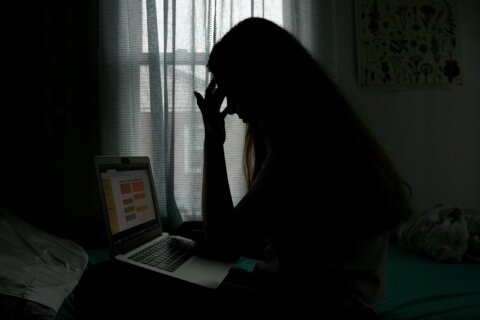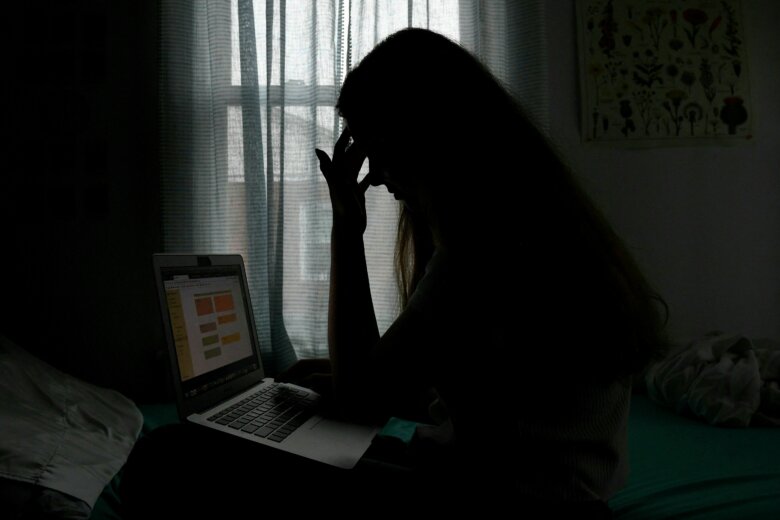
After over a year of staying at home and following strict safety guidelines, many people are understandably reluctant to step out their front door and re-enter society.
For some, they’re downright terrified.
Psychiatrist Dr. Arthur Bregma calls this fear “cave syndrome,” a non-medical term he’s coined.
At his practice in Coral Gables, Florida, he found many of his patients were nervous about going outside their homes and interacting with others as Covid-19 restrictions lifted. Some of his patients felt mildly uncomfortable while others took their fear to more extremes.
“I’ve seen patients who are locked in their room at home” while conducting telemedicine calls “and they’re wearing a mask,” Bregman said.
Over the past couple months, he’s seen people with moderate cases who have asked him to write doctor’s notes to get them out of going to work in-person.
Bregman said he spends much of his day trying to help these people who are jeopardizing their careers because of this fear.
Finding the courage to leave the cave
When he notices a patient is afraid to leave their home, he said he teaches them his MAV system, which stands for “mindfulness, attitude and vision,” which he developed in 2021.
The first step is to be mindful about what’s bothering you and focus on narrowing down what that is, he said.
Once you know what is making you nervous, Bregman said it’s time to start to develop a positive attitude. It’s important to have a positive mindset and believe good things can happen to you when you leave your house, he said.
A great way to develop this positivity is to imagine all the great activities you participated in prior to the pandemic, such as eating indoors with friends or attending concerts, Bregman noted.
The last step is to visualize your goals and what you can accomplish when you leave your “cave,” he said. The sooner people can do this system, the better, Bregman added.
“The longer people are in their cave, the harder it is to get out,” he said.
Some reluctance is normal
“Cave syndrome” isn’t a formal diagnosis, which needs to go through a formal approval process before getting into the Diagnostic and Statistical Manual of Mental Disorders. The DSM is published by the American Psychiatric Association and acts as a dictionary for mental disorders.
Many people are feeling uncomfortable going out into the world, which is normal and to be expected, said Dr. Alan Teo, an associate professor of psychiatry at Oregon Health and Science University in Portland.
Teo said he’s cautious about applying the term “cave syndrome” to what for many is a normal range of experiences.
What many people may going through after living in a pandemic for a year is anxiety, which is a normal and appropriate emotion to experience when faced with such a traumatic event, he said.
Experiencing anxiety does not mean you have a disorder or syndrome, he said.
There are cases when it becomes clinically severe. If you aren’t able to leave your house and resume your regular life, Bregman recommends seeking professional help.
Strategies to face your fear
One method that can help you emerge from your cocoon is downward social comparison, Teo said.
Instead of upward social comparison, when you compare yourself to others who are socializing more than you, he recommended you compare yourself to those who are socializing less than you.
With downward social comparison, “it helps you feel a little bit better about yourself,” Teo said.
Some modest upward social comparison can encourage you to socialize more, but if you begin comparing yourself to your friend who goes out every night, you may start feeling bad about yourself, he warned.
On the flip side, “don’t feel pressured to do what the next guy is doing,” Teo said. Some people are introverted and feel drained after long periods of social interaction, which he said is perfectly normal.
Teo also suggested people try a behavior-based approach called exposure and response prevention. It’s a clinical strategy where you gradually expose yourself to what you fear, in this case social interaction, and you work your way up to more challenging social experiences.
An easy way to think of this approach is to imagine you’re climbing a ladder, Teo said. For the first “rung,” you could try taking a walk with a friend. For a higher “rung,” you could go to a party, he said.
People haven’t had to use their social skills like small talk as often over the past year, so it’s okay to be out of practice, Teo said.
And when we interact with others, it may look different.
Instead of talking about the weather, people might be talking about vaccine status and whether to wear a mask in a specific social situation.
“We were resilient in adapting to spending more time alone at home, and I think with practice those social skills are going to come back,” Teo said.








